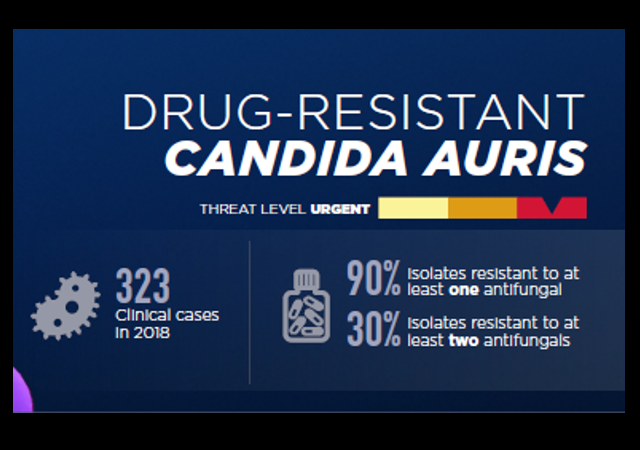‘Superbug’ Fungus Spreading in D.C. and Dallas Healthcare Facilities

In 2016, I blogged that the Centers for Disease Control and Prevention (CDC) reported the first cases of a drug-resistant and potentially fatal fungal infection have occurred within the United States.
The fungus, Candida auris (C. auris), is known to occur in health care settings such as hospitals and nursing homes. Then, in the spring of 2019, I noted that the CDC warned of the ‘superbug’ fungus sickening hundreds across the country.
The agency said the fungus is spreading in two of the nation’s top cities: Washington, D.C., and Dallas, TX.
The “superbug” outbreaks were reported in a Washington, D.C, nursing home and at two Dallas-area hospitals, the Centers for Disease Control and Prevention reported. A handful of the patients had invasive fungal infections that were impervious to all three major classes of medications.”This is really the first time we’ve started seeing clustering of resistance” in which patients seemed to be getting the infections from each other, said the CDC’s Dr. Meghan Lyman.The fungus, Candida auris, is a harmful form of yeast that is considered dangerous to hospital and nursing home patients with serious medical problems. It is most deadly when it enters the bloodstream, heart or brain. Outbreaks in health care facilities have been spurred when the fungus spread through patient contact or on contaminated surfaces.
Candida auris is deadly if it enters the bloodstream, heart, or brain. It can spread through patient contact or contaminated surfaces.
Scientists have identified four different strains of the fungus, which emerged around the same time across the globe. Officials have found all four strains in the United States, which probably occurred through international travel and subsequent spread in U.S. healthcare facilities.
The CDC sounded the alarm because it appears the fungus has evolved to the point that person-to-person of the drug-resistant version is now transpiring. This development is different from past outbreaks because scientists had no evidence of such patient-to-patient transmission of the drug-resistant strain.
In 2019, doctors diagnosed three cases in New York that were also resistant to a class of drugs, called echinocandins, that were considered a last line of defense.In those cases, there was no evidence the infections had spread from patient to patient — scientists concluded the resistance to the drugs formed during treatment.The new cases did spread, the CDC concluded.In Washington, D.C., a cluster of 101 C. auris cases at a nursing home dedicated to very sick patients included three that were resistant to all three kinds of antifungal medications. A cluster of 22 in two Dallas-area hospitals included two with that level of resistance. The facilities weren’t identified.Those cases were seen from January to April. Of the five people who were fully resistant to treatment, three died — both Texas patients and one in Washington.Lyman said both are ongoing outbreaks and that additional infections have been identified since April. But those added numbers were not reported.Investigators reviewed medical records and found no evidence of previous antifungal use among the patients in those clusters. Health officials say that means they spread from person to person.
C. auris causes infections of the bloodstream, wounds, and ears. Like other Candida infections, doctors usually diagnose C. auris infections by blood culture or other body fluids.
People who have recently spent time in nursing homes and have lines and tubes in their bodies (e.g., catheters) seem to have the highest risk for infection.
C. auris reports come from Washington, D.C., and Dallas. But we have reports of infections with this fungus across the country.
By 2018, over 300 clinical cases had been identified in a year.About 90 percent of those cases were resistant to at least one antifungal drug and 30 percent were resistant to at least two, according to the CDC.Between May 2020 and April 2021 alone, about 950 clinical cases have been identified.California, Florida, New York, and Illinois are all hotspots for the fungus with over 100 cases identified during that 12-month period.
Let’s hope the response to this disease is more successful than the one we have been experiencing with COVID-19.
And while it is a concerning development, I would be far more anxious if this fungus had originated in Wuhan, China.
CLICK HERE FOR FULL VERSION OF THIS STORY